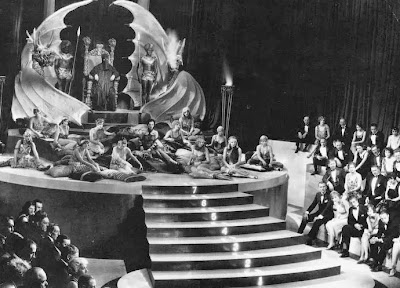Jackie Chan proving he can act up a storm
I love the films that Jackie Chan makes in Hong Kong. The last I saw was his belated 2004 entry into the phenomenal Police Story series. Many of his Chinese action movies are legendary, with life-risking stunts and an inventive mastery of martial arts. His direction and imagination in comedy action has been compared to the work of Buster Keaton, one of the few film-makers who also included the ambitious staging of stuntwork into his stories.
But the other brand of Jackie Chan film is something less than phenomenal. His Hollywood films focus more on his imperfect English and are obsessed with him being Chinese. The restrictions on risky stuntwork in Hollywood, plus his advancing years, have prevented him from doing most of his own stunts, severely restricting his talents.

Thinking about it, the last Hollywood film I saw Jackie Chan in was The Cannonball Run II (1984), during his first attempt to break into the American market. Since then, I’ve not been at all tempted by his English-speaking films, mostly comedy or children’s films.
Even in his recent Hong Kong movies, he’s been doing far fewer stunts and more acting. But in his own country, he has no problem being accepted in more serious roles. This is a more interesting side to his talents, best showcased in the new Shinjuku Incident in which he gives his best performance yet.

A world away from Rush Hour and Shanghai Noon, this is a tough drama about a sensitive subject, illegal Chinese immigrants trying to work in Japan. The film opens with a spectacular image of a shipwreck and a beach swarming with exhausted survivors. A farmer nick-named Steelhead (Chan) makes his way to Tokyo to join his brother (Daniel Wu). He’s left North-East China to try and find his girlfriend.
But as he tries to find work in Japan, he discovers that crime is easier than the dirty work offered to ‘illegals’. Through flashbacks we see his former life in China, which really doesn’t look that bad. The film presents financial gain as the motivation for his friends and family trying their luck in Japan. But this doesn’t fully explain why so many would repeatedly risk their lives just to be able to afford the latest luxury goods? Is the story avoiding telling the truth about why some Chinese ran away from China?

But Jackie isn’t like the others, he’s not in it for the money. The first half of the film tells a convincing story, with Chan giving an excellent and underplayed performance. It’s also fascinating to see him play an ordinary man who doesn’t know how to fight when he gets into a physical confrontation. I thought this was a cleverly played angle for someone so famous for their fighting skills.
The story takes a rather forced turn as his new friends, in this home from home, take on Japanese organised crime! It turns into a faint echo of The Godfather, right down to the brutal violence. It can’t hope to compete with such a classic, though the unusual setting carries it along. There’s more action and cinematic drama in this second half, but it’s rather rushed, with a noticeable leap in the narrative that hints that the film may once have been even longer.

While Steelhead’s motivations were easy to understand early on, his increasingly complex situation makes it much harder for us to sympathise. It’s hard to feel any compassion during his power struggle in the world of organised crime, however noble his reasons.
This is no less believable than many modern thrillers, in that they forfeit logic for intrigue, but the opening story of immigrants in Japan felt interesting enough. I’d have liked to see it played out logically, comparing the quality of life in China with Japan.

The use of Tokyo as a backdrop, and the mix of Japanese and Chinese actors must have been an ambitious undertaking, but it's entirely successful and fascinating to watch.
As a violent gangster tale in an unusual setting, with Jackie Chan showing just what he’s capable of as an actor, this is worth seeing. It's out in the UK on DVD and Blu-Ray from Cine Asia.
Here's a trailer...
















































